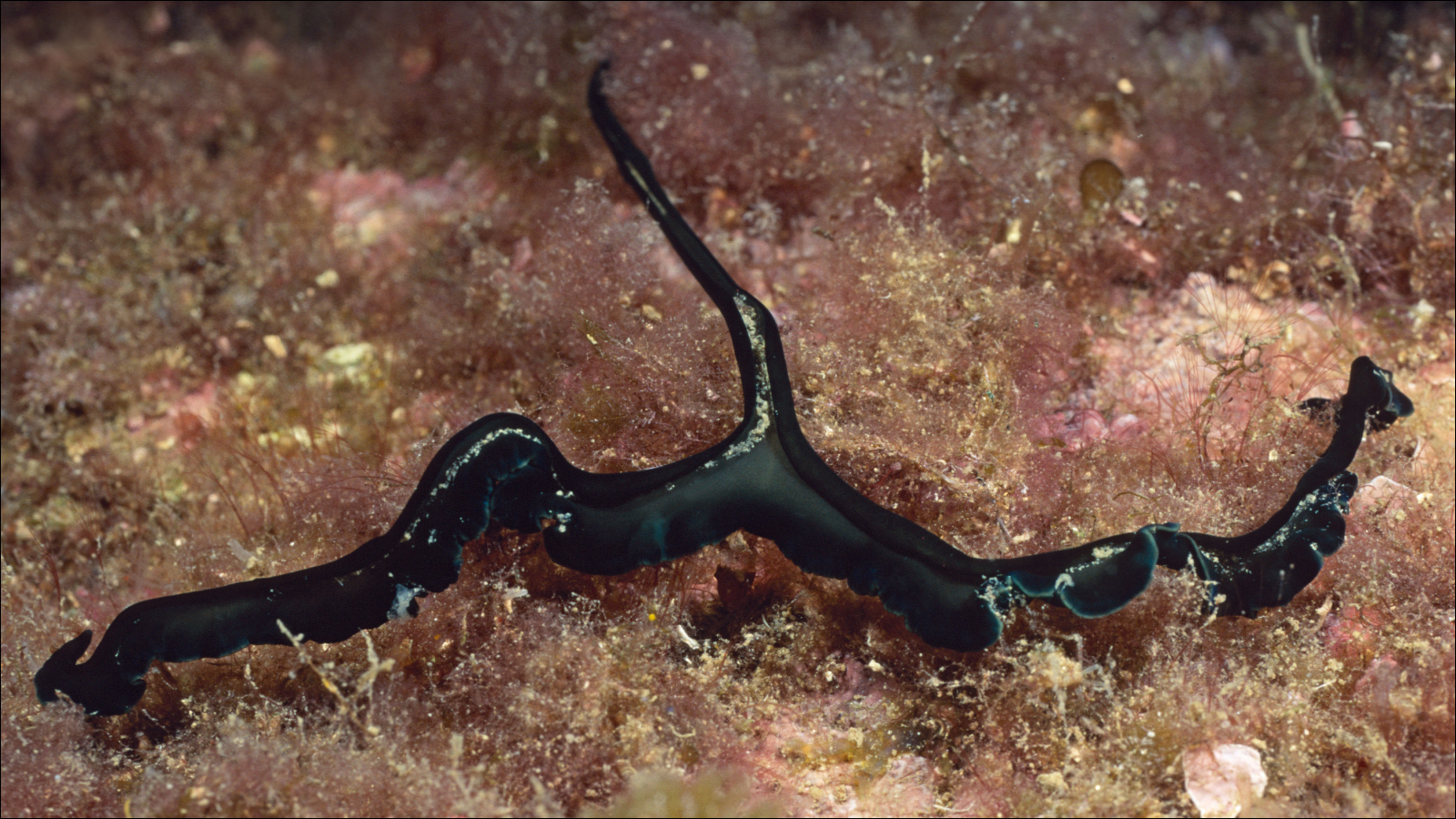Green spoonworm: The female tentacle monsters that turn males into 'living testicles'
This bright green sea creature contains a toxic pigment that protects it from predators, kills bacteria and determines the sex of larvae, turning males into a "living testacle."

Name: Green spoonworm (Bonellia viridis)
Where it lives: Seabeds in the northeast Atlantic, from the Mediterranean to northern Norway
What it eats: Organic matter filtered from the water and small invertebrates.
Why it's awesome: Green spoonworms are named for their spoon-shaped proboscis — a long,sucking mouthpart used for feeding — which stretches out into the water to catch food floating by.
"They basically look like a tentacle monster from a sci-fi film," Trond Roger Oskars, a research scientist specializing in marine invertebrates at Møreforsking Research Institute, told Live Science in an email.
The rest of their thick, sausage-shaped body remains buried in the seafloor — sometimes in burrows created by other animals — while their ribbon-like proboscis flutters in the water to fish for tiny pieces of organic matter to eat, including algae, rotten materials and even poop. "They're like vacuum cleaners sweeping over the ocean floor," Oskars said.
While green spoonworms' bodies are around 6 or 7 inches (15 to 18 centimeters) long, "that wavy proboscis can extend up to 10 times longer," he said.
Sign up for the Live Science daily newsletter now
Get the world’s most fascinating discoveries delivered straight to your inbox.
Their iconic bright green color, which comes from a toxic pigment called bonellin, warns predators to stay away. But not all green spoonworms look like this. "Here's the twist!" Oskars said. "The green specimens you see are only the females."
The sex of an individual relies on chemistry rather than genetics. If a larva floats through the ocean and settles on the seafloor, it develops into a female. But if a larva lands on a female, it reacts to the bonellin in her body and turns into a male. Like some species of anglerfish, these males are microscopic and are absorbed into her body, becoming a parasite with the sole purpose of fertilizing her eggs. "It's basically reduced to a living testicle," he said.
As well as protecting spoonworms from predators and turning males into living gonads, bonellin kills bacteria. "It is being targeted as a potential new antibiotic but may have a whole host of other interesting uses," Oskars said. "They are a prime example of why we need to know more about weird creatures and their habitats… We know only 10% of the species in the ocean, who knows what other creatures are hiding that have additional benefits?"

Melissa Hobson is a freelance writer who specializes in marine science, conservation and sustainability, and particularly loves writing about the bizarre behaviors of marine creatures. Melissa has worked for several marine conservation organizations where she soaked up their knowledge and passion for protecting the ocean. A certified Rescue Diver, she gets her scuba fix wherever possible but is too much of a wimp to dive in the UK these days so tends to stick to tropical waters. Her writing has also appeared in National Geographic, the Guardian, the Sunday Times, New Scientist, VICE and more.










